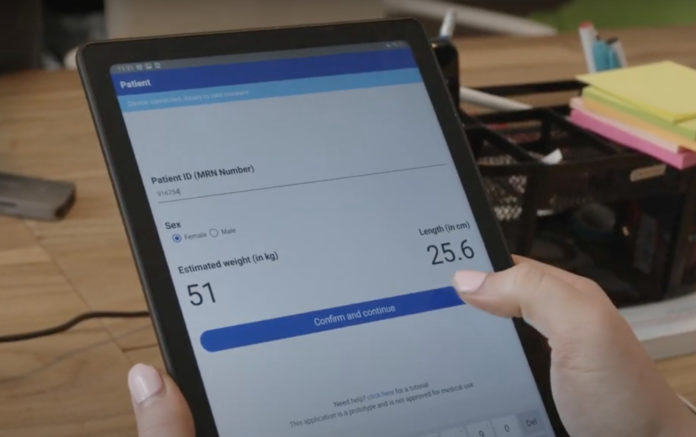By Georgia Powell
It’s no secret that during a trauma, an emergency room can get hectic, putting a tremendous cognitive load on nurses and physicians. This is especially true when it comes to administrating life-saving drugs to sick children, and ensuring they receive the right dose of medication at such a critical point in care.
With studies showing that one in every three children treated in North America receives the wrong dose, it’s clear that the current process – which relies on weight calculations done by hand and therefore has a high error rate – is in need of an overhaul.
That’s why my colleagues and I set out to do something about it. As graduate students in the Experimental Surgery Master’s program at McGill University, we had an “aha” moment during our internship at the Montreal Children’s Hospital when a trauma case came in by ambulance and the physician kept asking for the medication over and over because it was taking so long to prepare.
It became clear that the medical staff’s manual calculation and preparation of IV medication was not only creating a critical bottleneck in clinical workflow, but was posing a risk to children’s safety.
Supported by $45,000 in research funding through the Mitacs Accelerate Entrepreneur program – which funds and guides student start-up entrepreneurs to develop their technology – we developed a solution to automate the process and take the guesswork out of the current manual and time-consuming process of weight-based pediatric medication dosing, avoid costly mistakes and significantly improve patient outcomes.
The invention, called the IV Assistant, is an arm bracelet with a retractable tape measure that accurately predicts a patient’s weight given their arm size and sends it to a companion web app they developed for use on a tablet. An ER nurse then signs into the app, selects the drug requested by the treating emergency doctor, and our software does all of the math behind the scenes, automatically determining the correct dose based on weight, and walking hospital staff precisely through each step of IV medication preparation.
Through our research, we found that arm size is a better predictor for overall weight than current practices, so we leveraged it and digitized it. Using more than 20 years’ worth of arm measurements and weights available in a massive U.S. Centres for Disease Control and Prevention (CDC) database, we developed a first-of-its-kind weight-predicting algorithm. Based on feedback from doctors and nurses, having an automated process that they can trust to come up with the right dosage every time is game-changing.
Not only is the approach completely disrupting the way life-saving drugs are administered to sick children, but the novel device is poised to change the way emergency room clinicians work worldwide. In fact, it was recently featured in a new video series that showcases top Canadian innovations, called Their World, Our Future, available on YouTube by national innovation organization Mitacs.
Early testing of the prototype shows a 50 per cent time savings or better, meaning the current eight minutes it takes to prepare a pediatric IV medication dose on average can be shaved to four minutes or less. We are now working to refine and test the technology and expect to have a prototype ready for regulatory approval as a class II medical device within the next few years.
Thanks to the support of Mitacs, we were able to build the bridge between our company, McGill University, and the Montreal Children’s Hospital, allowing us to rapidly prototype our device in a medical setting and giving us access to a huge network of hospital professionals in the field who are the ones experiencing the challenges our company aims to solve.
Georgia Powell is COO of NURA Medical, a medical equipment startup based in Montreal.


